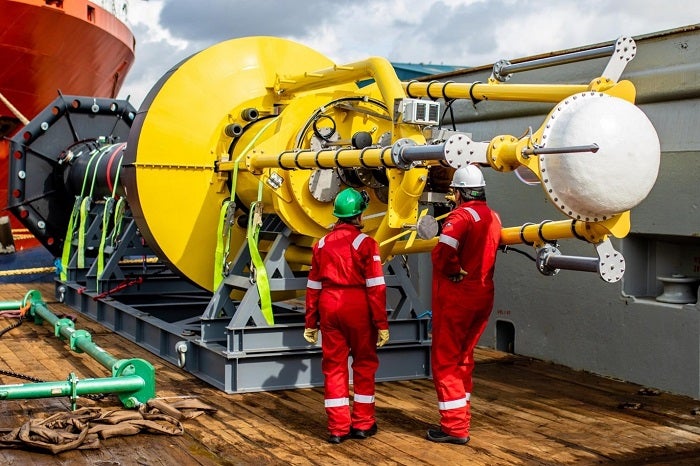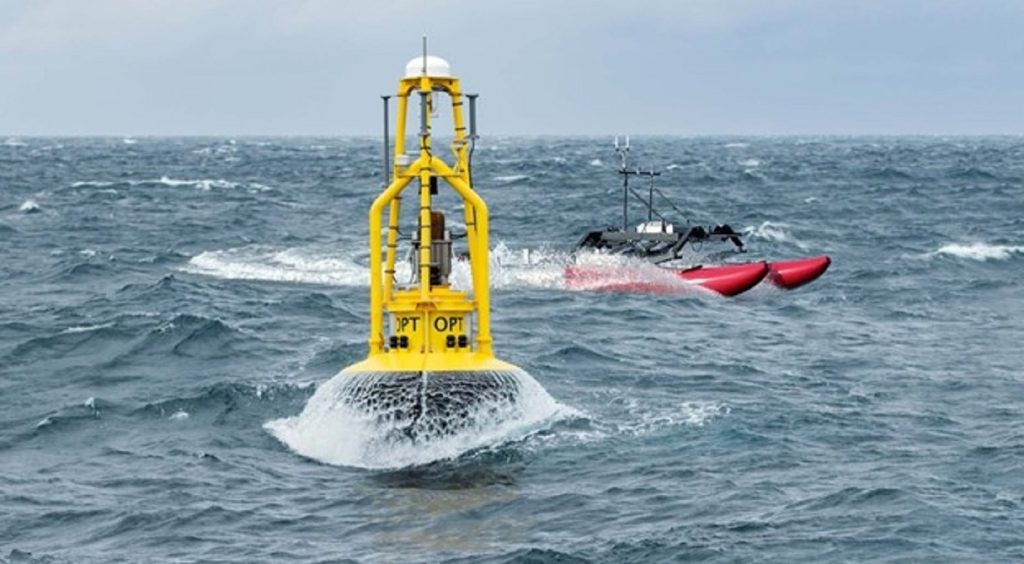For military customers who see potential in the integration of uncrewed maritime vehicles (UMVs) such as buoys, the proliferation of low-cost ‘attritable’ uncrewed systems in the air and land domains raises new questions as to which types of UMV projects provide the best value.
Dr. Philipp Stratmann, president and CEO of the US company Ocean Power Technologies (OPT), a commercial supplier of intelligent maritime solutions, spoke to Naval Technology about its solution to maritime domain awareness (MDA).
Recent attacks on shipping vessels in the Red Sea as well as China’s growing military posture in the South China Sea show how vulnerable ocean-based assets are during conflicts and around regions with political tensions.
In response, the US Department of Defense contracts OPT for its self-powered buoys that charge uncrewed surface vessels (USVs) and offer critical ISR.
These can be deployed to protect shipping lanes, detect and remove unexploded mines, and defend offshore windfarms among other missions.

Question (Q): How do OPT’s self-powered buoys work at sea?
Stratmann: So the power buoys have been deployed for several years, cumulatively. The underlying product, which is what’s called a ‘wave power buoy’, has been deployed.
The other part of the system is the MDA solution: ISR systems that sit on top of the buoys. That consists of an edge computing solution that deals with what is generally known as ‘dark vessel detection.’
So it collects AIS [automatic identification system] data, radar data and camera data, and compares the three so you can figure out whether somebody’s AIS is spoofing, has the AIS turned off? You can set it to, for example, focus on specific targets, like small boats crossing a contested area.
So what that then gives you is the ability to deploy a virtual fence that offers permanent resident persistent monitoring out in the ocean.
"If we’re not doing it, our adversaries are certainly doing it."
Dr. Philipp Stratmann, president and CEO of OPT.
Q: How will these assets respond to the maritime conflicts we see today?
Stratmann: So having having a power buoy out there that listens 24/7 to what’s going on, doesn’t have any noise signatures, and it doesn’t emit any carbon. It’s the ideal kind of tool for offshore monitoring.
Consider the Red Sea issues, if you had a fence of buoys that protect your shipping lanes, they’re sufficiently far enough deployed from the shipping lanes as soon as they detect an incoming missile or drone attack they could go and notify USVs that would then go near where the threat has been located and then launch aerial drones that intercept and interdict any aerial attack that’s been launched.
Do you want to continue fighting $100,000 drones with $2m or $10m cruise missiles? I'm not sure that’s the most efficient way of doing it. So that kind of gamification of the warfighting space is sort of lagging behind in the maritime space, but it is rapidly approaching.
If we’re not doing it, our adversaries are certainly doing it. We’re now dealing with the fact that you don’t need to have a nation state as a bad actor because it doesn’t take much for somebody to accumulate aerial drones that materially interrupt international supply chains.

Q: How would you differentiate the use of the buoys in the Red Sea from their use in the South China Sea?
Stratmann: I think they have a very similar concept, because ultimately you’re trying to be the eyes and ears on the ground. That gives you advanced warning to launch whatever countermeasures you need to launch. Especially if they’re coming not from your traditional land-to-land based but rather when they’re coming from the sea, you need forward based protection systems.
I think there was a good example of this. A couple of years ago there was a drone attack on some Saudi refineries. It came from the sea and your nearest monitoring systems to the sea are on your beach. If somebody fired them 100 miles ago, you don’t know until it gets near the beach. Whereas, if you have forward based buoys that are doing ISR nearer to the edge of view, you just got a five minute advantage to launch countermeasures.
Q: As a commercial supplier to the DoD, how would you describe the US’ defence procurement landscape?
Stratmann: What we find really interesting is that these are commercially available solutions. I think it takes an approach by government as a customer to look outside the traditional industrial defence base. I think that that’s certainly starting to happen in the US for things like the DIU [Defense Innovation Unit].
We’re just focused on getting systems into operations from the non-traditional suppliers because all that stuff is out there.
The government needs to look at the contracting mechanisms. These technologies aren’t prototypes. This is not the first time ever this has been deployed. These things have been around for a while. I think there’s just more of an acceptance now to use autonomy, artificial intelligence and advanced robots in the naval space, which is something that I think Air Force and Army have been doing for quite a while in the aerial drone space.









